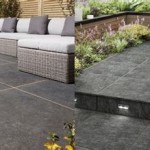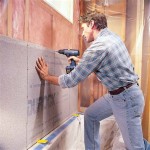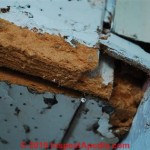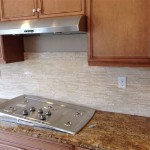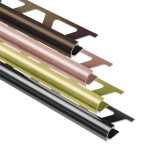The Definitive Guide to Removing Tile Glue from Concrete Slabs
Removing tile adhesive, often referred to as tile glue or thin-set mortar, from a concrete slab is a common task encountered during renovation projects. This process, while seemingly straightforward, can be labor-intensive and requires careful consideration of the type of adhesive used, the condition of the concrete, and the appropriate tools and techniques. Ineffectively removing adhesive can lead to uneven surfaces, compromising the integrity of subsequent flooring installations. This article provides a comprehensive guide to the best methodologies for removing tile glue from concrete slabs effectively and safely.
Before commencing any removal process, it is essential to identify the type of adhesive that was used. Common types include thin-set mortar (usually cement-based), epoxy-based adhesives, and mastic adhesives. Cement-based thin-set is generally the most common and can be identified by its gray or white color and relatively hard texture. Epoxy adhesives are typically two-part systems that cure into a very strong, chemical-resistant bond, making them more difficult to remove. Mastic adhesives are often organic-based and may be easier to remove chemically. Identifying the adhesive type is crucial because it dictates the most effective removal approach.
Safety is paramount when working with tools and substances involved in adhesive removal. Protective gear, including safety glasses, gloves (preferably heavy-duty), and a dust mask or respirator, should be worn at all times. Concrete dust can be harmful when inhaled and adhesive chemicals can irritate skin and eyes. Adequate ventilation is also essential, especially when using chemical solvents or power tools. Covering nearby surfaces with plastic sheeting will help contain dust and debris, simplifying the cleanup process. Before starting, ensure the work area is clear of obstructions and that children and pets are kept away.
Key Methods for Tile Glue Removal
Several methods can be employed to remove tile adhesive from concrete. The choice of method will depend on the type of adhesive, its thickness, the size of the area to be treated, and the availability of tools. A combination of methods may be necessary for optimal results. The following sections detail the most effective strategies, ranging from manual scraping to chemical solutions and power tool applications.
1. Manual Scraping and Chiseling: This method is best suited for small areas or for removing loose adhesive. A sharp, high-quality floor scraper with a rigid blade is the primary tool. The scraper is used to chip away at the adhesive, working at a low angle to avoid gouging the concrete. For particularly stubborn areas, a cold chisel and hammer can be used to break up the adhesive. This method is labor-intensive but provides a high degree of control, minimizing the risk of damage to the concrete surface. Effective manual scraping requires patience and persistence. It's crucial to maintain a sharp blade for optimal results. Regularly sharpening the scraper blade with a file or grinding stone will improve efficiency and reduce the effort needed.
2. Chemical Adhesive Removers: Chemical adhesive removers are designed to soften the adhesive, making it easier to scrape away. These removers come in various formulations, targeted towards specific types of adhesive, such as thin-set, epoxy, or mastic. When selecting a chemical remover, it is imperative to read the product label carefully to ensure it is appropriate for the specific adhesive being removed and safe for use on concrete. Always perform a test patch in an inconspicuous area to verify compatibility and prevent unwanted reactions. The application process typically involves applying the chemical remover liberally to the affected area, allowing it to dwell for the time specified on the product label, and then scraping away the softened adhesive. Some chemical removers may require multiple applications for thick or stubborn adhesive layers. Proper ventilation is critical when using chemical removers, and the manufacturer's safety instructions must be followed precisely. Residue from the chemical remover should be thoroughly cleaned from the concrete surface after the adhesive has been removed, as this residue can interfere with the adhesion of subsequent flooring materials. Neutralizing the concrete with a suitable cleaner may be necessary to ensure a clean and stable surface.
3. Using a Heat Gun or Heat Plate: Applying heat to the adhesive can soften it, making it easier to scrape away. A heat gun or heat plate can be used for this purpose. When using a heat gun, hold the nozzle several inches away from the adhesive and move it slowly and evenly to avoid overheating the concrete or scorching the adhesive. Overheating can potentially damage the concrete surface or release harmful fumes from certain adhesives. A heat plate, which is a flat, heated surface, can provide more even heat distribution and is particularly useful for larger areas. After heating the adhesive, immediately scrape it away while it is still pliable. This method is most effective on adhesives that are not highly heat-resistant. It’s also useful for adhesives that have aged and become brittle, as the heat can restore some flexibility, making them less likely to shatter into small pieces during removal. As with chemical removers, adequate ventilation is essential when using heat, especially if the adhesive contains volatile organic compounds (VOCs).
Power Tool Applications for Efficient Glue Removal
For large areas or particularly stubborn adhesive, power tools can significantly reduce the time and effort required for removal. Several types of power tools are suitable for this task, each with its advantages and disadvantages. Careful selection of the appropriate tool and technique is essential to avoid damaging the concrete slab.
1. Angle Grinder with Diamond Grinding Wheel: An angle grinder equipped with a diamond grinding wheel is a powerful tool for removing adhesive from concrete. Diamond grinding wheels are designed to abrade the adhesive without damaging the concrete's underlying structure. There are different types of diamond grinding wheels available, with varying grit sizes. A coarser grit is suitable for removing thick layers of adhesive, while a finer grit can be used for smoothing the surface after the bulk of the adhesive has been removed. When using an angle grinder, it is crucial to wear a dust mask or respirator and eye protection. A dust shroud attached to a vacuum can help to minimize dust dispersion. Use overlapping passes and avoid applying excessive pressure, which can cause the grinder to overheat and damage the concrete. Maintaining a consistent angle and speed is key to achieving a smooth and even surface. Professional contractors often use large floor grinders with similar diamond grinding capabilities for very large areas. These machines offer higher efficiency and more consistent results.
2. Concrete Scarifier: A concrete scarifier, also known as a concrete planer or milling machine, is a more aggressive tool for removing thick layers of adhesive or for profiling concrete surfaces. Scarifiers use rotating cutting wheels or flails to chip away at the adhesive and concrete. These machines are highly effective but can also be quite aggressive, so it is crucial to use them with caution. Adjust the cutting depth to avoid removing more concrete than necessary. Scarifiers are often used to remove coatings, epoxies, and other surface treatments in addition to tile adhesive. They are typically used for larger projects where speed and efficiency are paramount. Dust collection is essential when using a concrete scarifier, as they generate a significant amount of dust. A high-efficiency particulate air (HEPA) vacuum is recommended for capturing the fine concrete dust particles. Protective gear, including a full-face respirator, ear protection, and heavy-duty gloves, is essential when operating a concrete scarifier.
3. Oscillating Multi-Tool with Scraper Attachment: An oscillating multi-tool with a scraper attachment can be effective for removing adhesive in tight spaces or along edges. These tools use a vibrating motion to loosen the adhesive, making it easier to scrape away. Oscillating multi-tools offer a good balance between power and control, allowing for precise removal without damaging the surrounding concrete. They are particularly useful for detail work and for removing adhesive from corners and edges. Different types of scraper attachments are available, with varying shapes and sizes, to suit different applications. Start with a low speed and gradually increase it as needed to avoid damaging the concrete. Overlapping passes will help to ensure even removal. Dust generation is typically less than with angle grinders or scarifiers, but it is still recommended to wear a dust mask and eye protection.
Surface Preparation After Adhesive Removal
Once the tile adhesive has been removed, thorough surface preparation is crucial before installing new flooring. This preparation ensures proper adhesion and prevents future flooring failures. The level of preparation required will depend on the type of flooring being installed and the condition of the concrete slab.
1. Cleaning and Dust Removal: Begin by thoroughly cleaning the concrete surface to remove any remaining dust, debris, or adhesive residue. Vacuum the entire area with a shop vacuum equipped with a HEPA filter. Then, scrub the surface with a concrete cleaner or degreaser to remove any oily or greasy residues. Rinse the surface thoroughly with clean water and allow it to dry completely. If necessary, use a concrete neutralizer to remove any residual alkalinity from the concrete. This step is particularly important if an acid-based cleaner has been used. A clean and dust-free surface is essential for optimal adhesion of new flooring materials.
2. Leveling and Patching: Check the concrete surface for any irregularities, such as cracks, holes, or unevenness. Use a self-leveling compound or concrete patching material to fill in these imperfections. Follow the manufacturer's instructions carefully when applying these materials. Allow the patching material to cure completely before proceeding with the next step. Leveling and patching ensure a smooth and even surface for the new flooring, preventing any future problems with unevenness or instability.
3. Priming: Applying a concrete primer can improve the adhesion of new flooring materials to the concrete surface. Choose a primer that is compatible with both the concrete and the flooring adhesive being used. Apply the primer according to the manufacturer's instructions. Allow the primer to dry completely before installing the new flooring. Priming helps to create a strong and durable bond between the concrete and the flooring, preventing any future peeling or delamination.
By following these detailed steps, the removal of tile glue from concrete slabs can be performed effectively and safely, resulting in a surface that is ready for new flooring installation. Careful planning, proper tool selection, and thorough surface preparation are the keys to a successful project.

How To Remove Adhesive From Concrete Floors 5 Diy Ways Get Glue Off

How To Remove Old Floor Tile Adhesive All Stripped

3 Easy Ways To Remove Tile Mortar Thinset From Cement Floor Tilemortar

Best Ways To Take Out Even Impossible Remove Glue From Floors

How To Remove Black Mastic Or Carpet Glue From A Concrete Floor Www Sealgreen Com 800 997 3873

How To Remove Carpet Glue From Concrete 4 Proven Ways Network

How To Remove Tile Adhesive Maid2match

How To Remove Adhesive From Concrete Floors 5 Diy Ways Get Glue Off

How To Remove Tile Glue From Concrete Stone Protection

How To Remove Floor Tiles From Concrete Our Guide
Related Posts

